
Zamki i obiekty obronne w Małopolsce
107 zamków i obiektów obronnych jakie w różnej formie zachowały się na terenie Małopolski.
Chrostowa was not probably a castle but a defensive, fortified tower, surrounded by a wooden palisade. The proper name is also fortalicium.
Wczesnobarokowy zamek w Nowym Wiśniczu

Dwór obronny w Wieruszycach
There was a fortified-residential tower surrounded by a moat, built in the first half of 15th century by Wieruski family, Szreniawa coat of arms.
Bochnia – Zamek Żupny
Zamek obronny w Czchowie
Późnogotycki Zamek w Dębnie
Zamek obronny Tropsztyn
Zamek powstał na początku XIII wieku z inicjatywy rodu Ośmiorogów. Pierwsza wzmianka o nim pochodzi z 1231 roku. Rekonstrukcja zamku obronnego wzniesiona na stromym półwyspie oblanym z trzech stron rzeką Dunajec w gminie Czchów. Historia zamku jest związana z położoną po przeciwległej stronie rzeki wsią Tropie. W 1574 roku, w okresie kontrreformacji, zrujnowany przez właścicieli Rożnowa. Już w 1608 roku zamek był opisywany jako ruina. W 1970 roku został kupiony przez prywatnego właściciela. Po 1993 roku przeprowadzono odbudowę zamku, a następnie udostępniono go zwiedzającym.
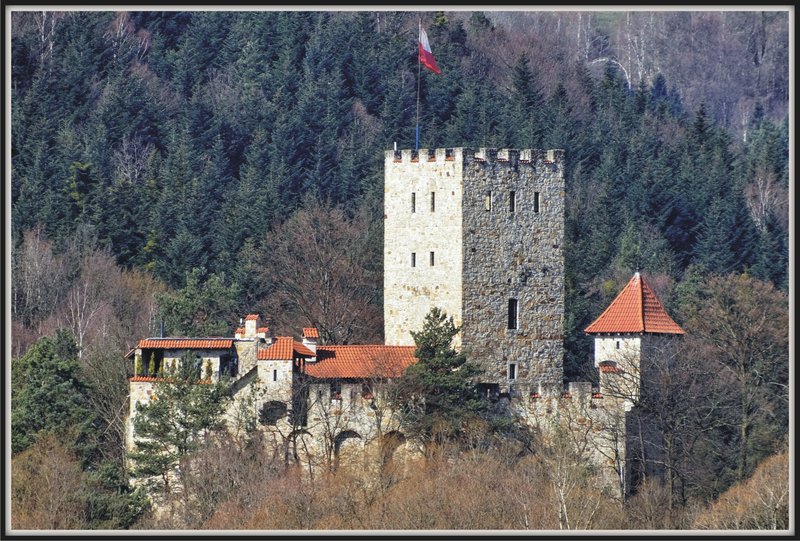
Gotycki zamek obronny Lipowiec

Zamek w Dąbrowie Tarnowskiej
Zamek w Dąbrowie Tarnowskiej jest często mylony z pałacem, przez zachowaną bramę. Zamek stał kiedyś w innym miejscu niż pałac.
The castle was built in the 17th century by Ligęza family. At the end of the 17th century Michał Kazimierz Lubomirski transformed the castle into the baroque palace. In 1780, the palace was taken over by Stojowscy family, who lived there until 1846. Even then it was devastated, and in the subsequent years, it was burned and demolished. The only element that preserved is the entrance gate.
The Castle in Dabrowa Tarnowska is often confused with a palace due to the preserved gate. Interestingly, the castle used to be located in a different place than the palace itself.
Zamek Podborze-Breń
Zamek w Bieczu
Biecz – królewski dwór obronny
The existence of the castle is certified in the chronicals of 1395r. It functioned simultaneously with the first castle. In fact, it was the royal fortified manor house built on a hill (280m asl). After the destruction of the castle , the Holy Spirit Church was erected and a hospital for the poor. At the end of the 16th century, the demolition of the castle began. From the resulting material, the construction, which exists today, has been built (standing a few meters west) and is called “Gród” [a fortified town]
Zamczysko Berdechów w Bobowej
Warownia w Wilczyskach
Kasztel w Szymbarku
Zamczysko w Jankowej
Dwór obronny w Gorlicach
Zamczysko w Krygu
Zamczysko in Kryg
At the top of the Zamkowa Mountain there was a castle or a fortified manor house in the Middle Ages. Just below the summit the traces of a castle from the 15th and 16th century were found. They were fragments of pottery and defensive walls. The settlement existed here before ten century, proof of which are the excavations in the vicinity of the castle.
Zamek w Bieczu
Dwór obronny w Ropie
It was probably built in the middle of the 16th century, on the initiative of Brzeziński family. In the 19th century it was transformed into a court granary which is located in the western part of the palace complex in the center of the town. After a recent fire – it has been restored. Currently it is privately owned.
Zamek na Gródku w Krakowie
Pierwsze ślady osadnictwa na terenie tzw. Gródka pochodzą z IX-X w., a być może nawet z VII w., czego dowodzą badania archeologiczne na tym terenie. Na przełomie XIII i XIV w. powstał w tym miejscu ufortyfikowany gród należący do krakowskiego wójta Alberta. W maju 1311 r. niemieckie mieszczaństwo Krakowa wznieciło bunt, na którego czele stanął wójt Albert. Powodem wystąpienia była chęć obsadzenia tronu polskiego osobą Jana z dynastii Luksemburgów, nie zaś Władysława Łokietka. Ten ostatni zdobył w czerwcu 1312 r. zamek Alberta, „unieszkodliwił” buntowników, a budowlę zrównał z ziemią. Kilka lat później na miejscu grodu powstał zameczek miejski zwany „Gródkiem łokietkowym”. Fortalicja była otoczona wałem i fosą, co potwierdza notatka z 1340 r., która powstała przy okazji sprzedaży parceli ziemnej leżącej w miejscu dawnej fosy. W tym samym roku Gródek praktycznie stracił swe znaczenie, gdyż miasto zostało domknięte murami miejskimi.
Gródek jednak nie zniknął i na początku XV w. w niewyjaśnionych okolicznościach przeszedł w ręce Tarnowskich. Po pożarze w 1475 r. zameczek został odbudowany w postaci pałacu, który pozostał własnością Tarnowskich aż do 1621 r. Został wówczas kupiony przez księżną Annę z Branickich Lubomirską i przekazany siostrom dominikankom. Budynki pałacowe zostały następnie zburzone i do 1635 r. wzniesiono w tym miejscu klasztor, który istnieje do dziś.
The first traces of a settlement in the so-called Gródek come from the 9th and 10th century, and perhaps even the 7th century, proof of which is the archaeological research in this area. At the turn of the 13th and 14th century a fortified castle, belonging to the mayor of Krakow – Albert, was built. In May of 1311 the German burghers of Krakow started a revolt, which was lead by Mayor Albert. The reason of the revolt was a desire to place John of the Luxemburg dynasty on the Polish throne, not Władysław Łokietek. The latter managed to capture the Albert’s Catle in June 1312, render the rebels harmless and razed the building to the ground. A few years later, on the site of the castle, a little city castle was constructed which was called „Gródek łokietkowy.” The fortification was surrounded by an embankment and a moat, which is confirmed by a note from 1340, established on the occasion of the sale of the lot of earth lying on the old moat. In the same year, Gródek almost lost its meaning, because the town was closed by the city walls. Gródek, however, did not disappear and at the beginning of the 15th century in mysterious circumstances, it was passed onto Tarnowski family. After a fire in 1475 the castle was rebuilt in the form of a palace, which remained the property of the Tarnowski family until 1621. It was then bought by the Duchess Anna of Branick- Lubomirski family and handed over to Dominican sisters. The Palace buildings were then destroyed and until 1635 the monastery, which still exists today, was built.

Warowny klasztor w Tyńcu

Zamek Królewski na Wawelu
Państwowe Zbiory Sztuki
31-001 Kraków, Wawel 5
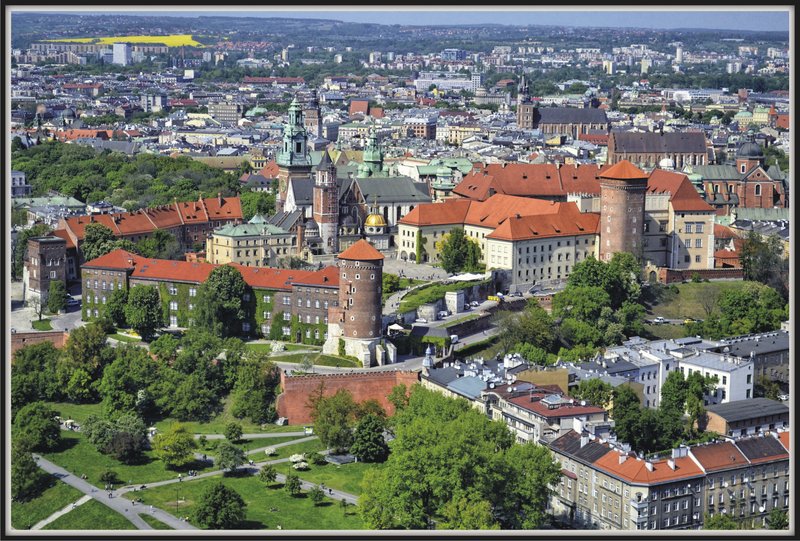
Wieża obronna w Krakowie – Woli Justowskiej
Defensive tower or fortalicium, was probably built in the late 14th century. Its remains , mainly tower’s foundations were discovered during the research works in the Decius palace.
Zamek w Krakowie – Przegorzały
30-251 Kraków, ul. Jodłowa 13

Dwór obronny w Branicach
Wieża obronna w Krakowie – Łobzów
Wieża mieszkalno-obronna Kraków – Zwierzyniec
Zamek – Biały Kościół z.Kluczwoda
Zamek rycerski w Korzkwi
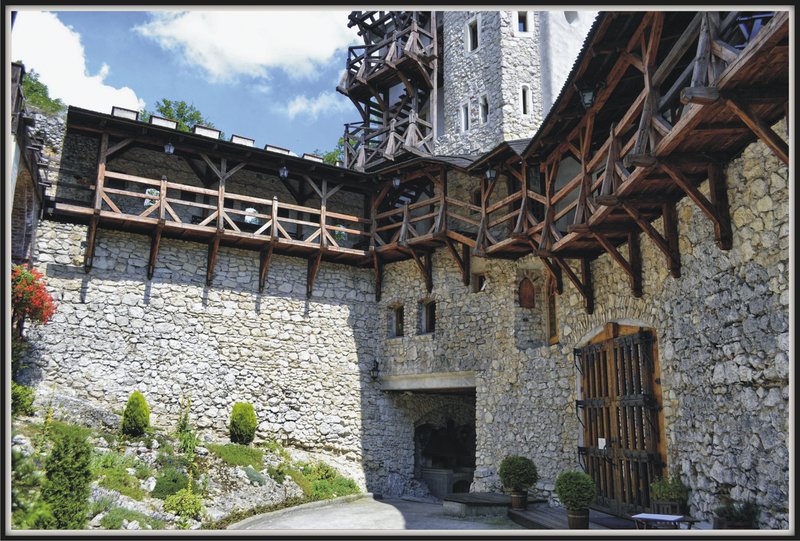
Zamek rycerski w Morawicy
Knight’s castle was probably built by the Toporczyk family in the 14th century. It was destroyed in the seventeenth century. The residential building has survived – currently it is a presbytery.
Zamek królewski w Ojcowie
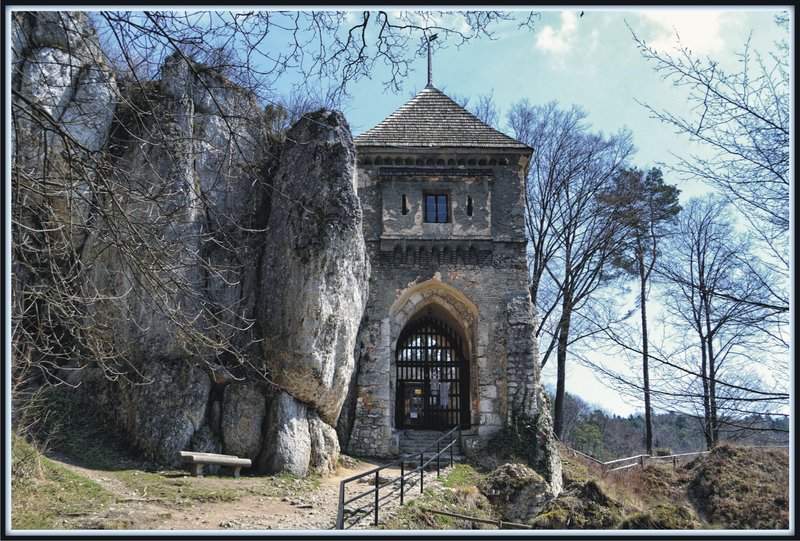
Zamek Pieskowa Skała
32-045 Sułoszowa, woj. małopolskie
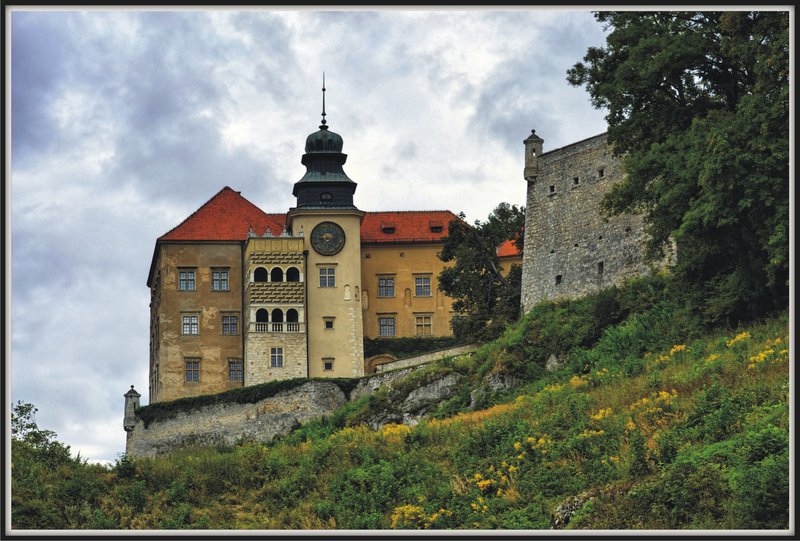
Zamek Skała-Grodzisko
Zamek w Skawinie
Zamek gotycki Tenczyn w Rudnie
Kontakt do koordynatora: 784 412 561

Wieża obronna w Piekarach naprz. klaszt. Tyniec
Zamczysko Dubie
Na północny zachód od wsi na Górze Zamczysko można zauważyć pozostałości po dawnej wieży obronnej. Zachowały się fundamenty kamiennej budowli obronnej. Założenie składało się z wieży obronnej i obszernego majdanu.
Zamek w Smardzowicach
Dwór obronny w Pisarach
Wieża obronna w Przyszowej
Dwór obronny w Skrzydlnej I
In the Skrzydlna village there was a medieval fortified manor house of Ratułt dignitaries with brick fortified tower. Information about the manor house is found in documents from 1473. No traces of the castle have been left. Its exact location is not known as well.
Dwór obronny w Skrzydlnej II
Wieża obronna w Janowiczkach
Zamek renesansowy w Książu Wielkim
ul. Wincentego Witosa 10
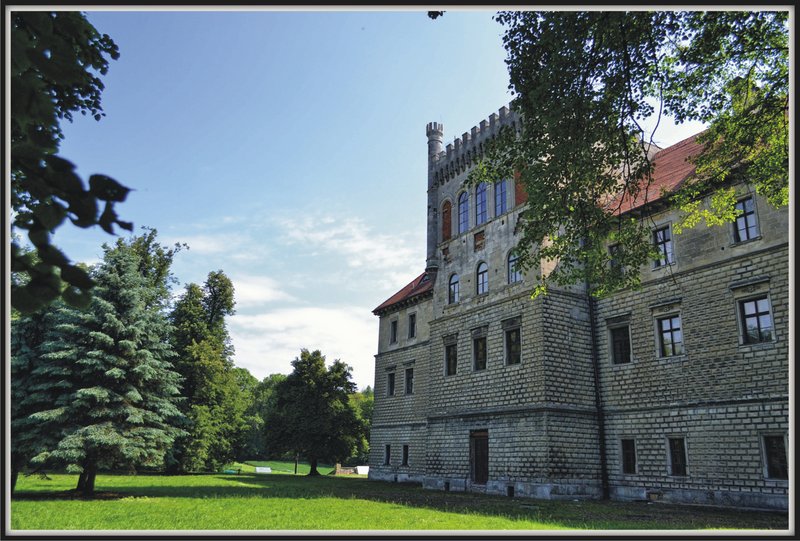
Zamek w Dobczycach
Stare Miasto
tel. 518 825 830

Zamek w Myślenicach
Dwór obronny w Myślenicach
In Myślenice there was a Renaissance fortified manor house, built between 1550-1560. It was destroyed in the 18th century. It was demolished after 1773. Until today, no traces of the castle have left.
Zamek w Nowym Sączu
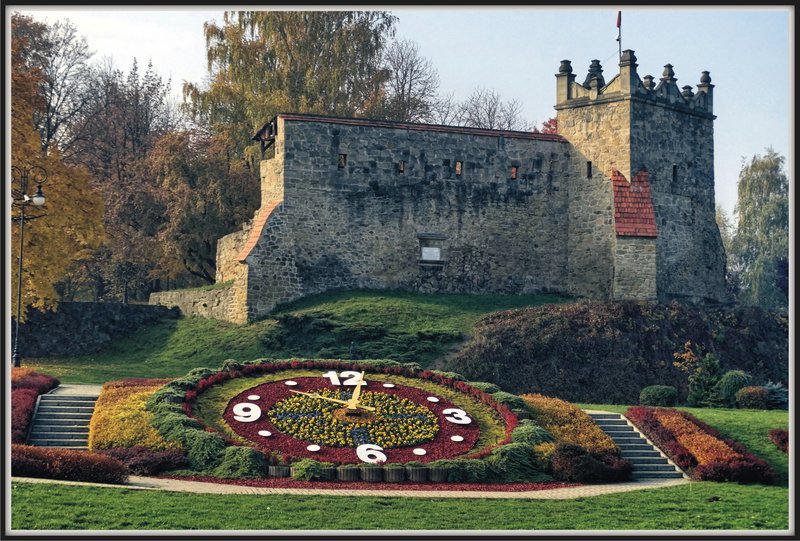
Zamek w Gródku n.Dunajcem
The castle was built on the hill (after damming up water ruins on the island on Rożnowski Lake). Its foundation is dated back to the period of the late Middle Ages. The castle guarded the route connecting Spisz and Krakow. It repeatedly changed its owners. Over the years the castle fell into ruin. During the research before creating the lake, the relics of the 1m embankment were discovered at the top of the hill. Most likely it was a castle, however, since there were not any stone elements there could have been a palisade of the inner wooden tower .
Zamek rycerski Maszkowice
Zamek Lemiesz n.Dunajcem
Zamek w Muszynie
Zamek rycerski w Rożnowie
Zamek renesansowy w Rożnowie n.Dunajcem
At the foot of the old castle there are ruins of the castle built by Hetman Jan Tarnowski in the Renaissance style in the 1st half of the 16th century. The construction was not completed. The bell-foundry, fragments of curtains, bastion, gatehouse and remnants of the walls have survived. The best name for it is the bulwark or fortification bastion. It can also be added to the group of the castles as for its structure. It is a transitional form. It has for example a gatehouse.
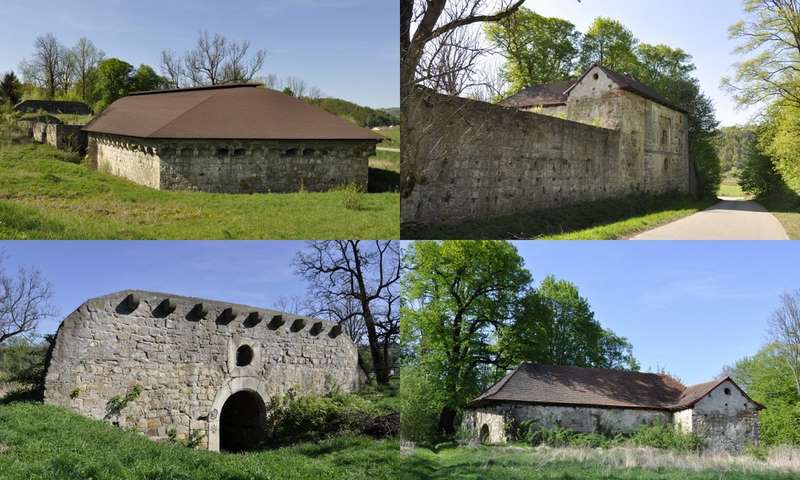
Zamek w Rytrze
The ruins of the castle can be found on a steep mountain by the Poprad River built at the end of the 13th century. It was extended by Kazimierz Wielki in the 14th century. It guarded the border and the trade route to Hungary. It was rebuilt in the 15th century but destroyed in about half of the 17th century. The fragments of stone walls and towers as well as a moat have survived.

Klasztor warowny w Starym Sączu
Monastery of St. Clare was founded in 1280 by St. Kinga, located in the center of Stary Sacz on a steep slope on the Poprad River. The defense system of the monastery consisted of defensive walls the cylindrical tower and a gate tower situated next to the church.
Dwór obronny w Nawojowej
By the road of Nowy Sacz-Krynica the neo-Gothic building can be visible – it is a palace of Stadnicki family. It was transformed into the palace, the fortified manor house was built between 1580-1590 by Peter Nawojowski. A remnants of the original defense style are over a meter thick walls and vaults made of ashlar.
Zamek w Tyliczu
Jan Bębynek in the monograph of Muszyna says that in Tylicz at the time of Kazimierz Wielki’s reign, there was a castle. This is confirmed by the note in the judicial book of Muszyna informing about the events of the castle on August 14th 1670.
Dwór obronny w Witowicach
In this area there was a Renaissance fortified manor house with a high tower, called by the local people – the castle. Its builder was John Wiernek in 1626. The castle was inhabited until 1818 and demolished in 1822.
Dwór obronny w Zbyszycach
Fortified Manor House in Zbyszyce
Fortified manor house was built in the 17th century. It consisted of a wooden residential building on a high stone foundation and fourcorner brick towers. After the subsequent reconstruction of the manor it acquired the shape of a classical noble residence.
Kościół obronny w Zbyszycach
In Zbyszyce there is a unique monument of sacred defense construction. It is a fortified church from 15th century. Its walls are 1.5 meters thick. There are slits in the side walls.
Gród w Wojnarowej
Due to the information included in the „Geographical Dictionary of Polish Kingdom” we can assume that at the top of Trzeblin Mountain there were the remains of an old building. Archaeological research carried out in 1968 confirmed the existence of a castle here and other traces of the embankment. Actually, it could have been called a gloomy castle. The discovered embankments prove that it could have been such a construction.
Gród w Zabrzeży
On the rocky peak of Babia Mountain at the mouth of the Kamienica River to Dunajec in the place of the castle there are traces of the moat and a stone wall about 3.5m thick. It is believed that this was the residence of the property managers of St. Clare’s monastery.
Zamek Królewski w Czorsztynie
zwiedzanie indywidualne, bez przewodnika
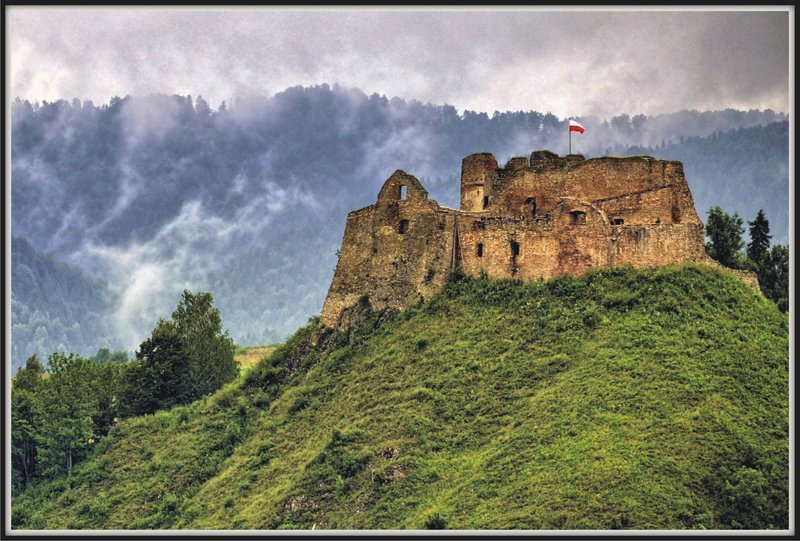
Dwór obronny we Frydmanie
Kościół obronny w Krościenku


Zamek rycerski w Niedzicy
34-441 Niedzica
ul. Zamkowa 2
tel. 18 2629489, 18 2629473
wystawa „wozownia” w cenie biletu do zamku

Zamek Królewski w Szaflarach
The ruins of the royal castle which was built in the 1st half of 14th century in the place of the former castle. It was surrounded by a peripheral wall and moats. It was the seat of the royal administrator. Originally, the castle was owned by the church, later, by the royal families. It was demolished at the end of 14th century. The fragments of the foundation have survived.
Gród w Sromowcach
The castle was built on the flat top of the „Zamczysko” hill. It was built probably in the first half of the 14th century. No traces of the construction have left.
Zamek w Jaworkach
The research of the area on the banks of the Grajcarek creek in front of the church indicate a possible location of a brick castle in that place. During excavations which were carried out in 1988 the fragments of dishes and bricks from the 16th -17th century were discovered.
Łapsze Niżne – dwór obronny
After purchasing a village in 1593 Jerzy Horwath built a fortified manor house. In the course of its extension in the seventeenth century the tower was added. Over the years the manor house fell into ruin and was eventually demolished after World War II. The residential buildings appeared in its place.
Zamek Falsztyn
The construction of the castle in Falsztyn was taken up in 1535 by Hieronim Łaski. The documents disclose the name- Falkenstein. The archaeological works which were carried out in 1962 helped to reveal the foundations of two medieval buildings. Destruction, traces of fire and the bones which were found suggest that the castle was destroyed during the fighting.
Dwór obronny w Harklowej
Zamek Pieniński na Zamkowej Górze
Zamek w Bobrku
Castle on the Przemsza River built by Jan Ligęza. The first mention of the castle dates back 1395. Due to its location, at the end of the Republic and the local trade routes to Moravia, the castle had a great military and economic importance.
Grodzisko n.Skawą
The castle by Skawa
The facility was on a promontory of the hill at the confluence of the Skawa and Bochenka rivers. The school, which was built in this place, has erased the traces of the castle. The traces of the embankment, which close the promontory, have survived.
Zamek w Malcu
Zamek książęcy w Oświęcimiu
The castle on the Sola river was built in the 14th century by Piast princes of Oswiecim in place of the wooden fortress. Between the 15th -17th centuries it was the seat of the mayors. It burned down in 1503 and was rebuilt in the 16th century. The castle was destroyed by the Swedes in 17th century. Later on, it was transformed into a prison. After 1772 it was rented to the army and starosty. In 1805 it was damaged by the Sola river. The fragments of a retaining wall and the buildings of the 19th century have survived.
Zamek w Zatorze
Castle in Zator – mainly a palace, originally a prince castle of the defensive characteristics of 1th century. The seat of the dukes of Zator of the Silesian line of Piast family, later on the starosty. In 1778 it was purchased by Duninów and partially rebuilt with an extension of second floor. In 1836 Potocki family partly rebuilt and restored the palace according to the design of Francis Maria Lancia, and the building acquired the characteristics of a mansion in the romantic neo-Gothic style. Between the years 1964-1973 it was completely restored. On the ground floor, there are richly decorated rooms: a hunting room, a golden room, a fern room, an Ivy room. After the process of succession at the beginning of 2013, the castle was regained by the Potocki family.
Dwór obronny w Graboszycach
Fortified manor house was built in 1575 by the royal secretary Dionysius Brandys. It was rebuilt several times. In the place where the mansion is located there could have been a castle. It was destroyed after World War II and it has not been rebuilt since then. Since 2002 it has been a property of private owners.
Dwór obronny w Głębowicach
The manor house dates back the second half of the 16th century and it was probably constructed in place of a former fortified manor house. It was transformed in 1646 into a Baroque palace. The building was extended in 1773. The fire in 1969 destroyed the construction. It has not been renovated since then and the castle is falling into ruin.
Zamek rycerski w Bydlinie
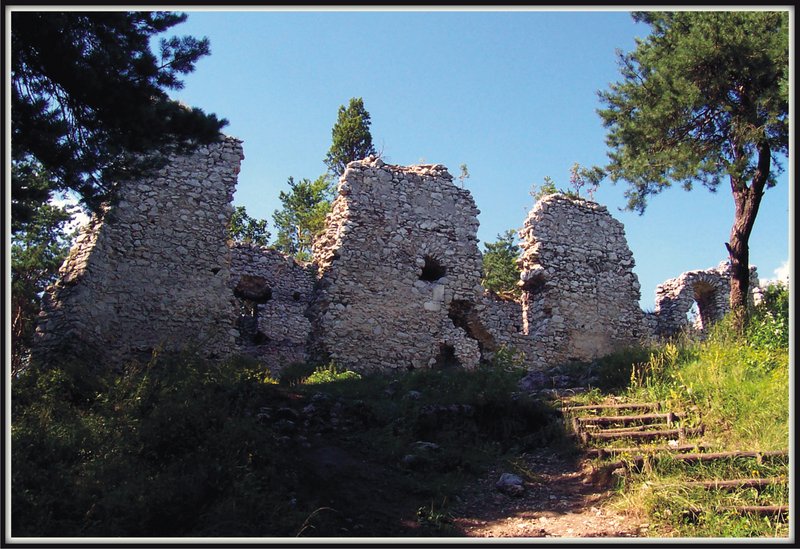
Wieża obronna w Kwaśniowie
The discovery of the construction of a tower , which was used as a shed, made by the archaeologists in 2001 proves the existence of a fortified tower in this area. The lintel of the front door revealed the date 1552. It was built on an artificial embankment surrounded by a moat, whose outline is visible.
Zamek w Olkuszu
Castle in Olkusz
The only mention of the castle in Olkusz comes from the chronicle of Dlugosz. In 2001 during the construction works, the archeologists encountered a thick wall of red sandstone, and a gate, as well as the fragments of windows (probably) an entrance gate. This proves the existence of a castle in this area.
Zamek gotycki Rabsztyn

Gród obronny w Krzykawce
In the 13th century a medieval fortified town appeared here. It was located on a natural steep promontory. Inside the embankments there was a wooden residential and defensive tower. The tower was reinforced by clay face protecting against fire and strengthening its defensive character. After the destruction in the 14th century the castle and the tower has not been rebuilt.
Wieża obronna w Kluczach
Fortified Tower in Klucze
Mentioned in the medieval documents a watchtower in Klucze was a stone fortified tower.
Dwór obronny w Jakubowicach
Fortified manor house was built by the Jakubowski family in the 16th century. It repeatedly changed its owners and was rebuilt many times. Currently it is privately owned.
Zamek renesansowy w Suchej Beskidzkiej
Zamek zbudowany w widłach Skawy i Stryszawki około 1614r, w miejscu dawnego dworu obronnego Kaspra Suskiego. Wielokrotnie zmieniał właścicieli. Rozbudowany w 1780r. Zachowały się dwa skrzydła z narożnymi niskimi wieżami i arkadowym dziedzińcem, dla których nazywany jest „Małym Wawelem”.
Castle in Sucha Beskidzka

Dwór obronny w Wysokiej
Zamczysko w Zembrzycach
Knight’s castle in Melsztyn
Knight’s castle built in the 1st half of the 14th century on a hill on the Dunajec river. It repeatedly changed its owners. In the 2nd half of the 16th century it was transformed into a magnate Renaissance residence. The castle resisted the attacks of Swedes in 17th century. It was destroyed during the fighting of the confederates with the tsar’s troops approx. in 1772. The fragments of the walls, towers and a moat have survived.
Zamek w Wielkiej Wsi
The castle on the Pańska Mountain was built in the 14th century. The castle changed its owners several times. The castle stopped performing its residential functions probably in the seventeenth century. The ruins of the castle are located on the edge of the ridge.
Wieża obronna w Rzepienniku Biskupim
Średniowieczny gród w Wojniczu
W Wojniczu istniał średniowieczny gród a także dwór Zamoyskich. Po zmianie koryta Stradomki dokonano przebudowy obiektów. Całkowitych zniszczeń dokonali Szwedzi w 1702r. N miejscu dworu został zbudowanu istniejący do dzisiaj pałac Dąmbskich.. Wokół pałacu rozciąga się park.
There was a medieval castle and the manor house of Zamoyski family. After changing the channel of Stradomka river, the buildings were reconstructed. The total damage was done by the Swedes in 1702. In the place of the manor house the palace of Dąmbski family, which exists today, was built. The palace is surrounded by a park.
Dwór obronny w Szerzynach
The first fortified manor house was built here in the 16th century. The manor was destroyed in the early 17th century. After the reconstruction for the residential purposes, the manor house was used until the mid-twentieth century. Today, after the reconstruction it is used as a presbytery.
Tarnów – klasztor warowny
The original wooden monastery house was constructed in Tarnow in 1459. Jan Amor built a brick monastery in its place between the years 1468-1499, which was surrounded by a fortified wall. The facility was adjoined to the city walls. The monastery suffered greatly during the Swedish invasion. Later, the monastery building was used by various institutions, and currently serves the administrative institutions.
Zamek rycerski w Tarnowie

Zamek w Barwałdzie Górnym
The castle was built in the middle of 14th century. It is located on the hill. It was demolished in 1447 on the order of Kazimierz Jagiellończyk. The remains of stone foundations and walls have survived.
Zamek gotycki w Lanckoronie
ruiny dostępne przez cały rok – bezpłatnie
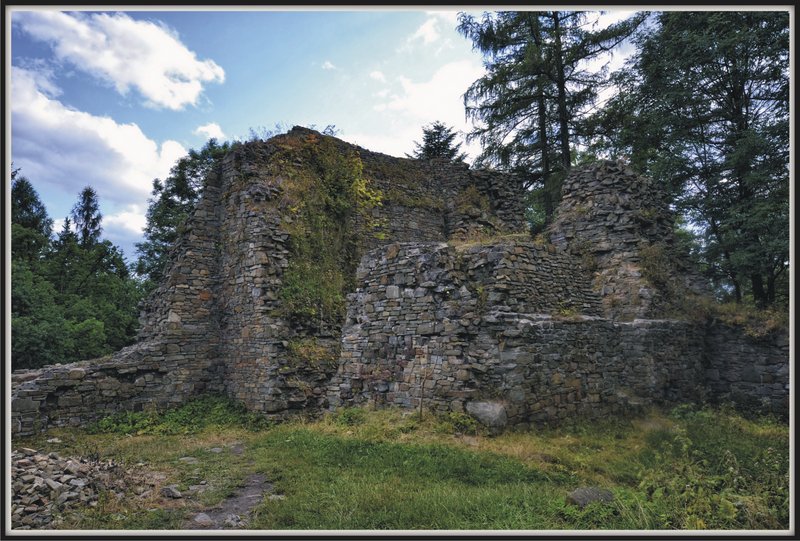
Zamek gotycko-renesansowy w Spytkowicach

Dwór obronny w Stryszowie
The manor house was built in the 16th century by the owner of Stryszów – Adam Suski. It originally served the typically defensive purpose. The manor repeatedly changed its owners and was rebuilt many times. The renovated mansion is home to a branch of the State Art Collections at Wawel.
Dwór obronny w Zebrzydowicach
The fortified manor house, which exists today and is currently performing the function of the hospital, was built in the 16th century. It was the seat of the Zebrzydowski family. The manor house has three towers. The lower storey houses the key slits.
Dwór obronny w Gorzeniu Górnym
Zamek Królewski w Niepołomicach
Zamek zbudowany w XIVw. Przez Kazimierza Wielkiego. Przebudowany przez Zygmunta Augusta w latach 1550-1571. Służył jako myśliwska rezydencja podczas polowań w puszczy niepołomiczkiej, Zniszczony przez Szwedów w XVIIw. Przebudowany przez Austriaków. Restaurowany w XXw. Zachowały się: sala myśliwska, brama, wieża zegarowa oraz arkadowy dziedziniec.
The royal castle built by polsh king Kazimierz the Great, then modernisied by king Zygmunt August in Renaisans style. Served as a hunting residens during huntings in Niepołomice Forest. Rebuilt by Austrian, renovated in 29thc. Visitors can see the hunting chamber, ancien gate, clock tower and arcade courtyard.
ul. Zamkowa 2, 32-005 Niepołomice

Zamek żupny w Wieliczce
32-020 Wieliczka, ul. Zamkowa 8


zamek – castle
gród – a fortified town
dwór obronny – a fortified manor house
wieża obronna – a fortified tower
fortalicium –
donżon – a keep
fortyfikacja – fortification
klasztor warowny – a fortified monastery










